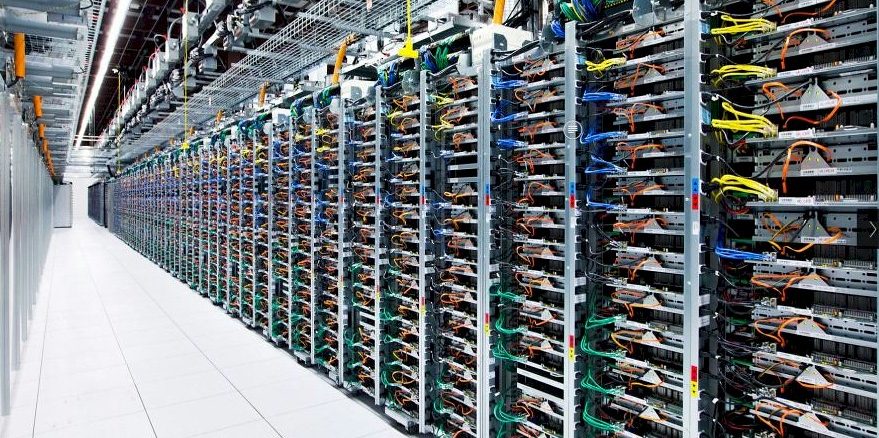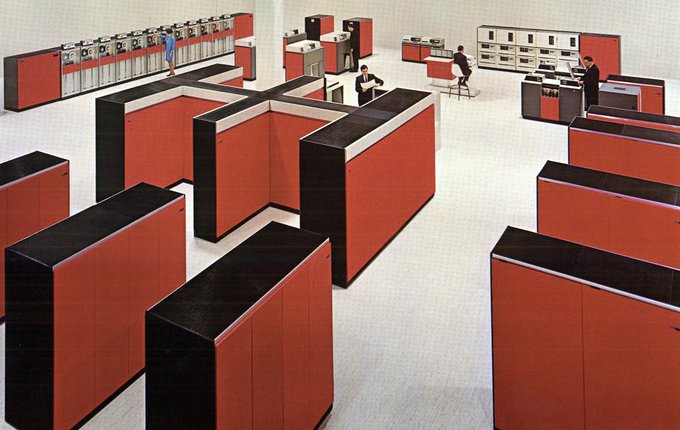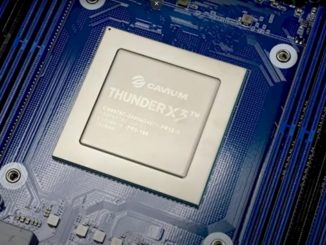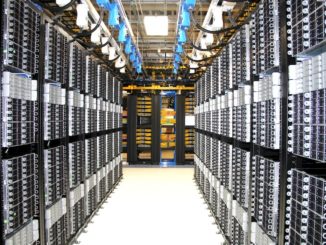
Components make compute and storage servers, and servers with application plane, control plane, and data plane software running atop them or alongside them make systems, and workflows across systems make platforms. The end state goal of any system architect is really creating a platform. If you don’t have an integrated platform, then what you have is an IT nightmare.
That is what four decades of distributed computing has really taught us, if you boil off all the pretty water that obscures with diffraction and bubbling and look very hard at the bottom of the pot into the substrate of bullshit left behind.
Maybe we should have something called a platform architect? And maybe they don’t have those titles at the big hyperscalers and public cloud builders, but that is, in fact, what these companies are doing. And for those of us who have been around for a while, it is with a certain amount of humor that we are seeing the rise of the most vertically integrated, proprietary platforms that the world has seen since the IBM System/360 mainframe and the DEC VAX, IBM AS/400, and HP 3000 – there was no “E” back then – minicomputers in the 1960s and the 1970s.
We are, to our great amusement, coming full circle, after decades of talk about “open systems” and “open source” and blah blah blah blah. Whatever. If you are on an open source project, and if it really matters, it either started at one of these companies, was funded at a university by one of these companies, or will end up in one of these towers of technology being built by these companies. That would be Alibaba, Amazon Web Services, Baidu, Facebook (which doesn’t yet offer cloud computing or system and application software as such), Google, Microsoft, and Tencent. In alphabetical order, not ranked by prominence. There are exceptions. Open source projects come out of other companies – Uber, Twitter, and so on – or startups that eventually go commercial and get acquired – think of all the neat things that CoreOS and Ceph did before Red Hat ate them, which is why IBM had to eat Red Hat to try to recreate its future.
Back when Paul Maritz was running VMware, as the Great Recession was really transforming the nature of the IT business and giving rise to the hyperscalers and public clouds, the vision he espoused for the company was to create the Virtual Data Center Operating System, or VDC-OS, which transmuted into the Software Defined Data Center, or SDDC, once VMware ate Nicera to get virtual networking and rolled it up as NSX and finally realized that it needed to create virtual SAN storage, too, if it were to complete the set. Maritz called the vision “the software mainframe, the mainframe of the 21st century.” And it nails precisely what VMware tried to do and what AWS, Microsoft, Google, Alibaba, Baidu, and Tencent are absolutely doing – and this time that ranking is a grade on how well or poorly they are executing thus far and their completeness of vision.
But make no mistake about it. Each one of these companies is making a virtual mainframe in the sky, and they each want to make it very easy for you to try and buy it – and make it exceedingly hard for you to leave. Just look no further to the free data ingress and the exorbitantly high data egress prices to prove that. But what we are talking about is more than that. Real platform providers
It is no secret that we have such admiration for the System/360, which launched in April 1964 and literally gave birth to the modern computing era. It was by far the biggest platform bet that any company in the history of data processing has ever made. Period. MapReduce, BigTable, Colossus, Spanner – whatever – is puny by comparison – and less complete in scale and scope in its time.
We detailed that early last year when talking about the $34 billion acquisition of Red Hat. The “Next Product Line” research and development project at IBM that resulted in the System/360 had a budget of $675 million (about $5.8 billion in 2019 dollars), which ballooned to more than $5 billion in the late 1960s, which was like $42.8 billion in 2019 dollars. At the time IBM committed to the System/360 in 1961, Big Blue had $2.2 billion in revenues and $254 million in net income; that converts to $18.8 billion in sales and $2.17 billion in profits in 2019 dollars. IBM blew two years worth of revenues or two decades of profit to create the System/360. Yes, bits of it were late and underperforming, but it utterly transformed the nature of data processing in the enterprise. It created data processing in the enterprise on a scale we had not seen before.
Now here is the bit we had not dug up the numbers on until now. Why on Earth would IBM do this, and risk its reputation as a tabulating machine and newbie computer supplier? Because the company saw something happening, and went big. It put all the chips it had and then a ton that it borrowed on that bet. And it paid off. Like this: During its planning for the Next Product Line, IBM figured the System/360 would generate about $7 billion in revenues, which is about $60 billion in 2019 dollars. But instead, IBM sold several tens of thousands of the System/360 machines all over the globe – this from a company founded by a man, Thomas J Watson, who once famously said that only four or five computers might be necessary in the world.
That turns out to be wrong over five decades, but maybe not over six or seven decades if you think of a public cloud as a computer. The ghost of Tom Watson might just be laughing right now. . . .

In any event, those System/360 machines drove $16 billion in sales, about $136 billion in 2019 dollars, and more than $6 billion in profits (about $52.3 billion in 2019 dollars). The bet paid off far more than even Big Blue’s optimistic projections. And it begat the System/370, the 3080, the 3090, the ES/9000, the System/390, and the System z that is still with us today. And, and, and, and that System/360 basically made it impossible for Burroughs, Bull, Sperry Rand, Honeywell, NCD, General Electric, and RCA to have their mainframe businesses survive. Fujitsu, NEC, and Hitachi stayed in the game for a long time, to be fair.
Now, we are rebuilding seven new monoliths who understand what an integrated platform is and the value it generates. So history is not repeating itself so much as it is running backwards.
The System/360 was a bottom up and top down completely integrated system, from transistor up to compiler, from the main frame of the system to banks of peripherals, and one that spanned a large performance range using different, but compatible, processing elements. It was meant to span all kinds of computing, commercial and technical (they had both flavors since the 1950s, after all), on the same platform, hence the 360 degree name. It covered it all, and that was the key new idea.
Well, that is what AWS does, and Microsoft Azure does, and Google Cloud does. Alibaba, Baidu, and Tencent are a little less further along on building the next platform but they are working away and have indigenous advantage in the critical Chinese market. And hopefully these will not be the last platforms anyone builds, but given the enormous investment to create the hardware and software, perhaps only such large clouds will be able to do the job. We will move back to the time-sharing model of the 1960s out of necessity as well as convenience.
As the big clouds and hyperscalers design more and more of their hardware and keep doing their own software, they are essentially creating the most proprietary compute and storage appliance in history. How ironic that so much of what they do is built on open source software. Built on open source by the new mainframe builders, but absolutely pwned.
So, maybe Watson was wrong. But not by much. The world might only need six computer makers, and seven if Facebook figures this out. Or maybe 200 flat, which is one for every member country in the United Nations, probably operated by a telco, plus the Super 7 who are supernational. And they when all is said and done, maybe there are only really a dozen different architectures for these machines.





But don’t forget Service Bureau Corporation. Perhaps that’s also in the future!
You are so right! Maybe Amazon will be forced to spin off AWS? HA! Ditto the others….
“…the substrate of bullshit left behind.”
Someone is not handling his COVID-19 lock down very well, lol?
That second Moderna shot had something special in it….
But what about Kubernetes, microsegmentation and open source software? You didn’t have that in the ’60/78/80… I believe that those big cloud players don’t have you pwned as Big Blue did 50 years ago…
I dunno. Mainframes had subsystems (something just shy of a container) and virtual machines, and then hardware partitions and logical partitions. Microservices was not a thing yet, and there was plenty of open source application code, particularly in the IBM System/3X and AS/400 base, where customers always got the source code to applications, which frankly I think was more valuable than an open source operating system. They could make mods to their heart’s content. That practice died out in the 1990s. My point was that these are complete platform plays, and it takes a lot more energy to do best of breed than it does to just drink the Kool Aid in our giant gulp and get on with creating applications. In that sense, it is no different from 50 years ago.
We’ve taken care of everything
The words you hear
The songs you sing
The pictures that
Give pleasure to your eyes.
It’s one for all
And all for one
We work together common sons
Never need to wonder
How or why.
We are the Priests
Of the Temples of Syrinx
Our great computers
Fill the hallowed halls.
We are the Priests
Of the Temples of Syrinx
All the gifts of life
Are held within our walls.
Well said, sir.
But
“Attention all planets of the Solar Federation. We have assumed control.”
There is always someone bigger. And they are driving a fleet of Red Barchettas, defying the Motor Law.